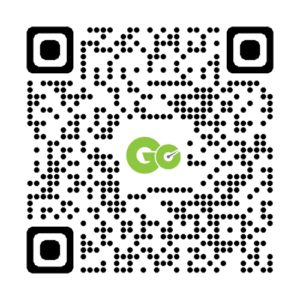QR Codes: The Mobile Movement Happening Now

Article Highlights:
- QR codes streamline the service check-in process.
- Customers want to interact with dealerships who are mobile friendly.
QR (short for Quick Response) codes have been around since 1994; however, it wasn’t until almost three decades later they became more of a solution and less of a novelty. In fact, QR codes are being used more frequently by retailers now than at any other point in history.
The reason for the surge? Growing demand for mobile technology — fueled by the pandemic and the need to provide a safe and hygienic customer experience — has propelled touchless options. QR codes are no longer just a convenience. They provide solutions to problems we face in many retail environments today.
What are the benefits of QR codes?
- Hygiene
Hygiene is one of the primary reasons QR codes are seeing such high interest right now. It’s dawning on consumers everywhere that contactless business interactions are the best way to maintain a safe distance and stay healthy. A great example of this is the QR code menu in restaurants. You’ve likely seen them — usually a small sticker or laminated QR code on your table. These replace the single filthiest thing you can touch at a restaurant: a paper menu. (I’m talking filthy as in 185,000 germs per square centimeter.)
- Accessibility
Smartphone and recent QR code statistics show 91% of iOS devices have a built-in QR code scanner (Android isn’t too far behind). As older devices are retired and taken out of rotation, that number continues to grow. A study done by Juniper Research suggests 1 billion smartphones will have QR code access by the year 2022. Many people are already walking around with the ability to scan a QR code in their pocket. Don’t believe me? If you’re an iPhone user: simply open your camera app, point the camera at the QR code below, and tap on the notification that pops up. Voila!

- Versatility
QR codes have many different uses. They can power anything from simple business cards to more complex touchless payment systems. They enable Wi-Fi authentication, stand in for printed airline boarding passes, and can even be used for service appointment check-in. They are quicker and easier to use and packed with important data. This means less manual entry, less duplication of information, and less room for human error.
- Improved Customer Experience
Let’s get specific and look at your service check-in process… By incorporating QR codes into this area of your dealership, customers don’t have to key-in any numbers, wait in a long line, or meet with an advisor face-to-face to signal they’ve arrived for their service appointment. Giving customers the option to check-in using a QR code not only benefits them, but is great for operations as well. It streamlines your check-in process, reduces friction at the check-in counter, and allows advisors to spend more time assisting those who truly need help, which leads to more personalized customer experiences.
- Faster Service
Giving customers the option to use a QR code makes for faster service and response time, which leads to more satisfied customers and ultimately, higher backend profits. Saving five minutes per customer may not seem like much of a difference; but, after 20 customers, that’s almost two hours of saved time and labor.
It’s no surprise consumers are more satisfied with businesses who are mobile-friendly, especially since many remain cautious about their health and safety. But more than that, using QR codes in different areas of your business, like the service check-in process, provides a level of digital convenience customers are used to in their other interactions. And, it elevates their experience with your dealership. It’s time to say goodbye to long lines and wasted time… and hello to the flexibility and convenience only offered through QR codes.
Related Articles:

Revving Up Mobile Service: How Bozard Ford Is Transforming the Customer…
Bozard Ford is transforming mobile service, using technology and efficiency to enhance customer convenience and dealership profitability. Learn how they’re shaping the future of automotive…

The Rise of Parts-Running Robots
Between parts shortages, rising repair expectations, and growing backlogs, service departments today are being asked to do more with less. Time is a premium commodity,…

Frustrated Customers, Overloaded Employees: The True Cost of Outdated…
Since hanging up my hat as a service advisor in 2005, I can’t help but notice how little has changed in the way dealerships handle…

Streamlining Vehicle Service Contract Claims
When talking to service advisors one pain point consistently rises to the top: Vehicle Service Contract (VSC) claims. The process includes lengthy phone calls, repetitive…















